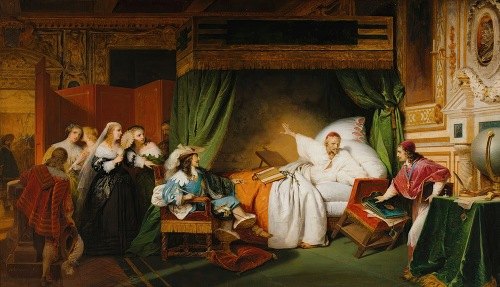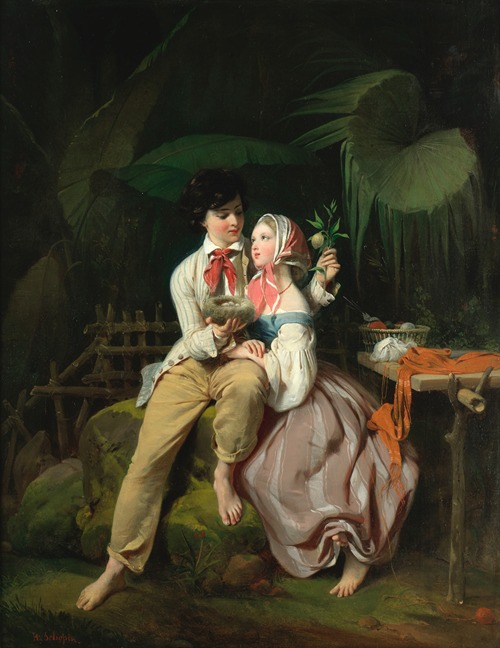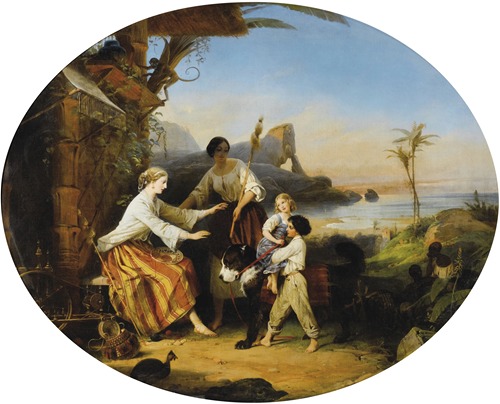
Born in Lübeck, Germany from French parents, Henri-Frédéric Schopin was the son of sculptor Jean-Louis Théodore Chopin who worked to the decoration of the Imperial Palace of Saint Petersburg upon Catherine II of Russia’s request. The young boy received his first artistic learning with his father. Between 1821 and 1831, Schopin studied at the Paris’ Fine-Arts School in the studio of Baron Gros.
From 1826, he applied for the competition of Great Prize of painting in Rome and won the second rank in 1830. He improved again his technique and gained the First Great Prize of Rome in 1831 for history painting, thanks to his swift and vigorous style.
During his stay in Rome, the painter prepared carefully his return to Paris and sent four paintings during the 1835’s Paris Salon. Here, he directly obtained a first-class medal and was going to exhibit at the Salon until 1879.
In 1830, he married Nathalie-Sophie Dailly and became the son in law of the actor Armand-Dailly, member of the Comédie-Française. From 1831, the painter decided to change his name by appending a “S” in front of his surname to be distinguished from the young pianist Frédéric Chopin, already famous in the Parisian society at that time.
Due to his perfect style, Henri-Frédéric Schopin was famous as well in history painting and religious painting than in portraits, scenes of genre, landscapes or even orientalist paintings.




